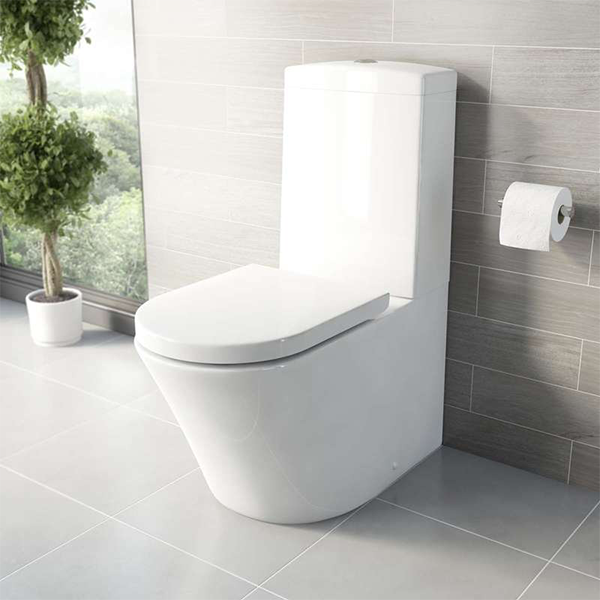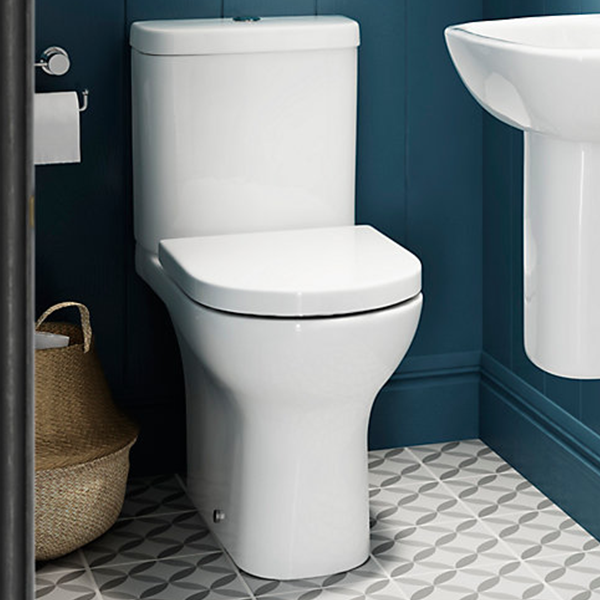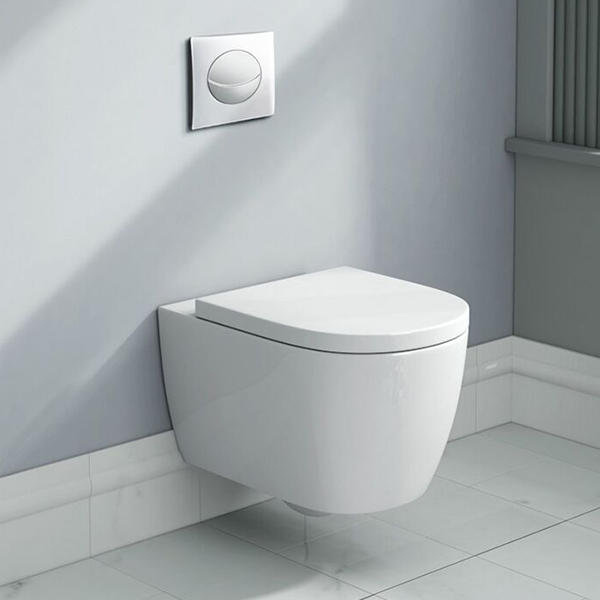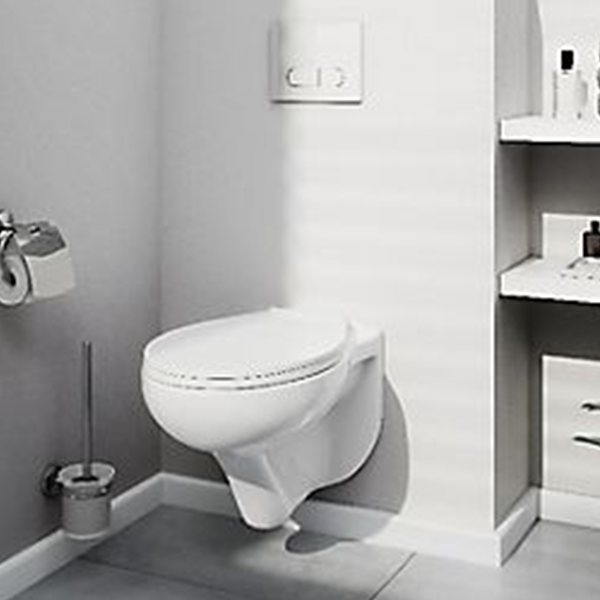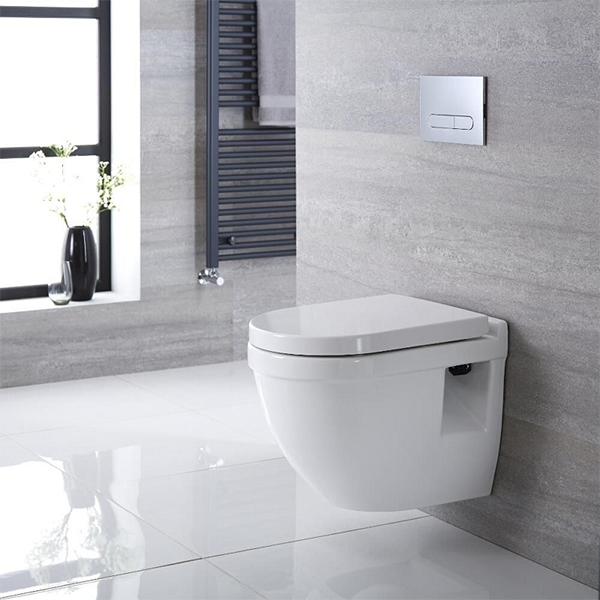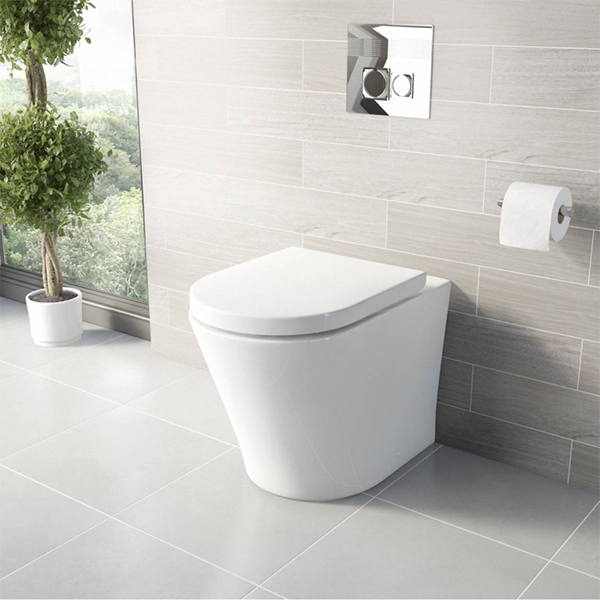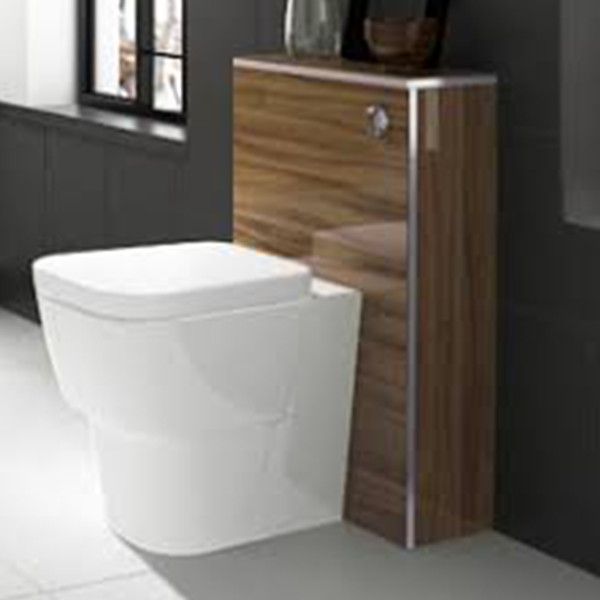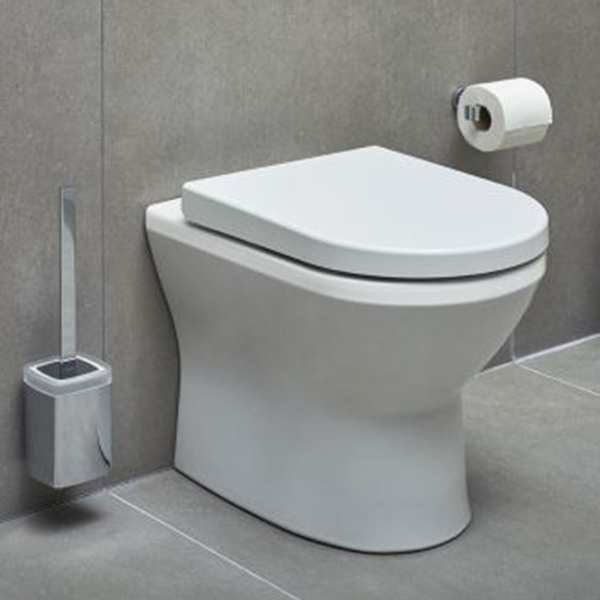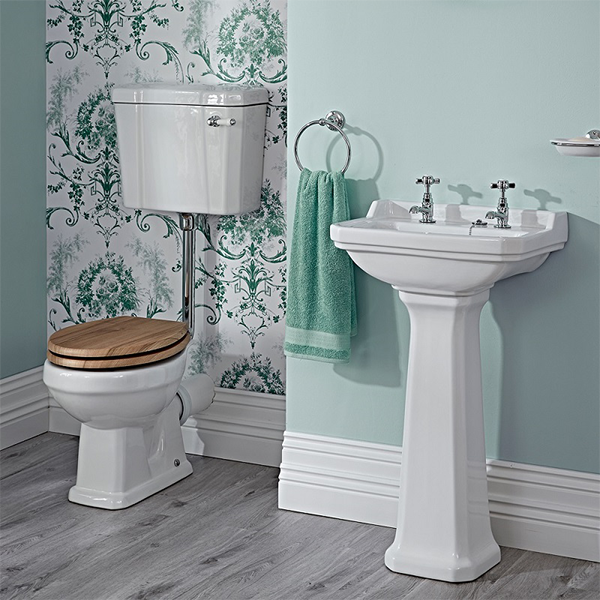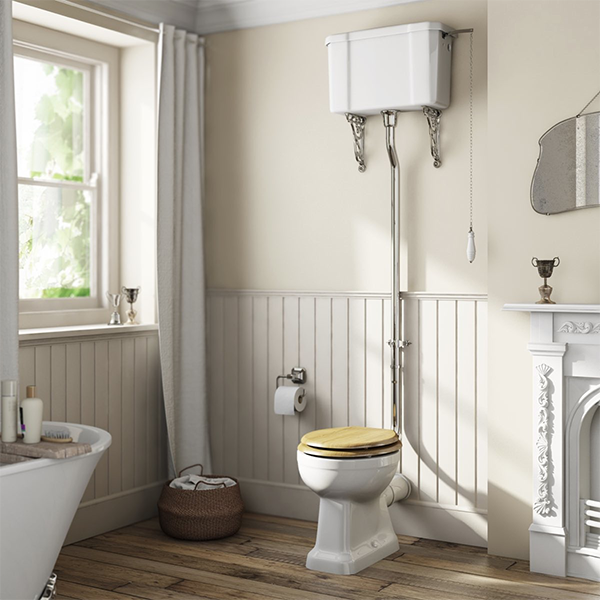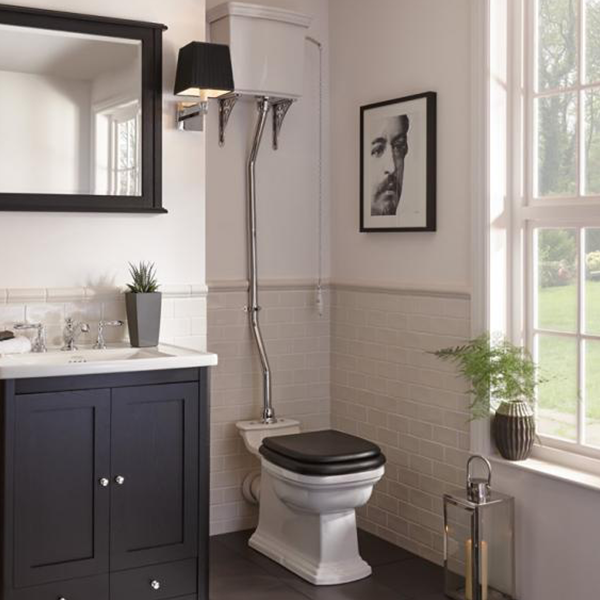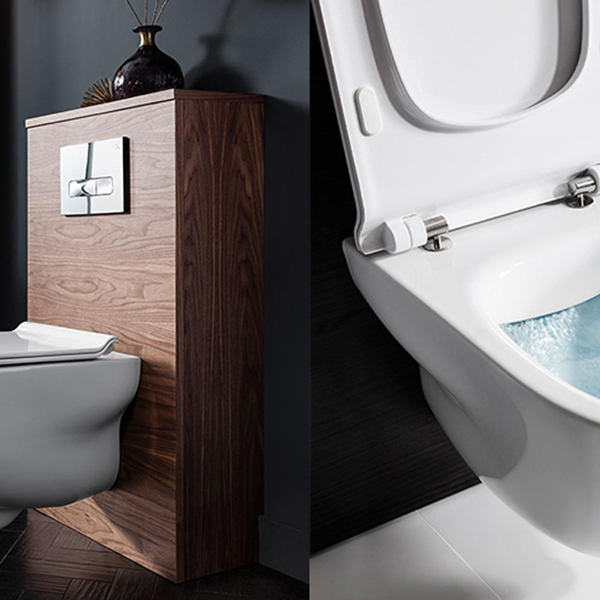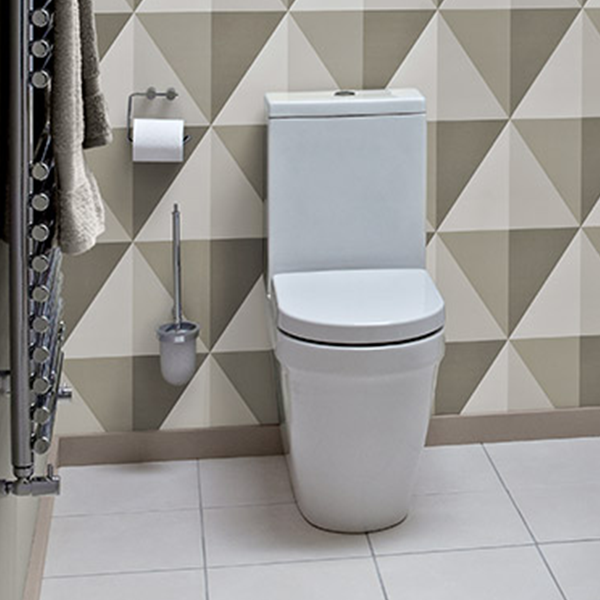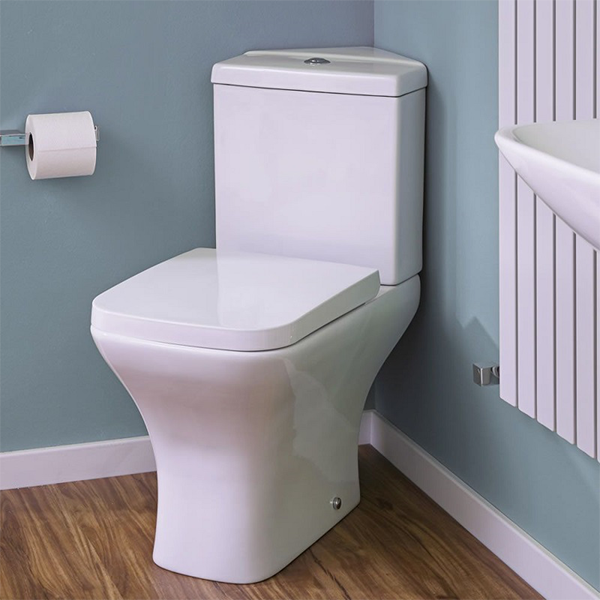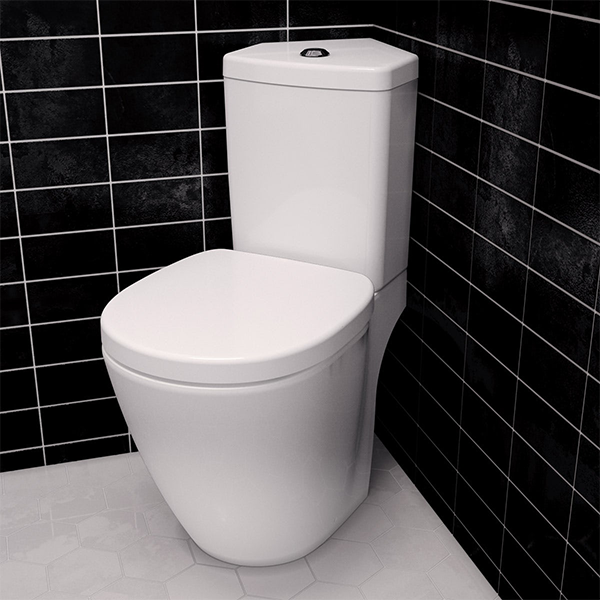Toilets & Seats
Toilets come in an abundance of shapes and sizes, from the conventional close-coupled toilet to the wall hung, the back to wall toilet to the high level. The toilet type you choose will be determined by various factors - the amount of space you have, the style of your bathroom, and budget. Add in a wide range of toilet seats and flush panels, one thing is for sure - gone are the days of boring, standard toilets!
Close Coupled Toilets
Closed-coupled toilets are the most common toilet-type in the UK and are available in a wide range of styles and shapes. Due to their popularity, they are often cheaper than other styles of toilet. A close-coupled toilet consists of two separate ceramic pieces – the pan and the cistern. The cistern is mounted directly on the top of the pan and pipework is hidden, so the effect is neat and tidy and cleaning is simple. Close-coupled toilets may come as a single piece or two joined pieces. For a more compact loo and modern look, choose a single piece – these are easier to clean as there isn’t a gap between bowl and cistern.
Wall Hung Toilets
Wall-hung toilets, as the name suggests, are hung from the wall. This leaves extra space underneath which helps to make your bathroom appear more spacious. The space underneath also makes cleaning both the toilet and floor much easier. Wall-hung toilets can be mounted at different heights which is ideal for people who find their toilet is too tall or short. They are supported by a strong wall frame that houses the concealed cistern, holds the toilet and hides away pipework. A wall-mounted toilet can usually be fitted to any wall, even a stud wall provided it is reinforced and supported correctly.
Back To Wall Toilets
Back-to-wall toilets are a good choice for a streamlined modern bathrooms and can help a small bathroom look spacious. The cistern is hidden behind the pan in either a specially designed unit or in the wall. There’s no pipework on show, so the finish is fuss free and cleaning the room is easier. The cistern is usually sold separately, so factor in this cost when you’re budgeting for your new bathroom.
High & Low Level Cistern Toilets
These toilets complement other traditional fittings to give a bathroom a more historic style and a touch of elegance. The cistern is on show and wall mounted, and the flush is often a lever or pulley design. The pan is floor standing and the two are joined by the flush pipe. They’re ideal for high-ceilinged rooms, making the most of the room’s lofty proportions, but you can get the look in a lower ceilinged room as designs with a shorter flush pipe are on offer.
Rimless Toilets
A more recent development in toilet design, rimless toilets lack the rim of a traditional toilet. Instead water is directed all the way around the pan to ensure the entire toilet bowl is cleaned with each flush. Although the flush of a rimless toilet appears powerful, it is more economical than a traditional flush which will help you save money on your water bill. As there is no rim for bacteria or limescale to hide, rimless toilets are also incredibly hygienic and are easy to clean.
Corner & Cloakroom Toilets
Both corner and cloakroom toilets are designed to save space in a small bathroom, en-suite or cloakroom. In the case of the corner toilet, the cistern is shaped to fit right into the corner of a room. Cloakroom toilets may be wall-hung, back-to-back or close-coupled in design but using different design features take up less room.
Toilet Style
If you’re creating a contemporary-styled bathroom, there are many close-coupled, back-to-wall, wall-hung, corner and cloakroom toilets to choose from. Some are curvaceous, others have sharper outlines. The toilet doesn’t need to match the other fittings but do think about creating a consistent feel to pull the look together. Traditional toilets have more intricate lines and design detail and harmonise well with classic pedestal basins and a roll-top bath.
Toilet Shape, Height & Width
Consider the shape and height of the loo when you’re buying because both will affect comfort levels when seated, access and the space the toilet takes up. Elongated seats are probably more comfortable, but project further into the room than round seats. Families with young children may want to opt for lower toilets. Conversely, a higher seat may mean older or less mobile users can use the loo without assistance.
Single Or Dual Flush Cistern
If you’re on a water meter and keen to spare natural resources, then look for a toilet with a dual flush. The larger flush uses approximately 6 litres, while the smaller flush uses 3 – 4 litres. This way, only the water necessary will be used on each occasion that the toilet’s flushed.
Soft Close Toilet Seat
While not essential, a soft close seat and lid will avoid a horrible clatter if either are dropped rather than lowered. Soft close seats are particularly useful in busy households or families with young children. Bear in mind that not all toilets are priced to include seats so check when budgeting and there is a small premium to pay for a soft close seat over a standard one.
The Compare Network
Copyright – Insight Retail Group Ltd 2025 All rights reserved
